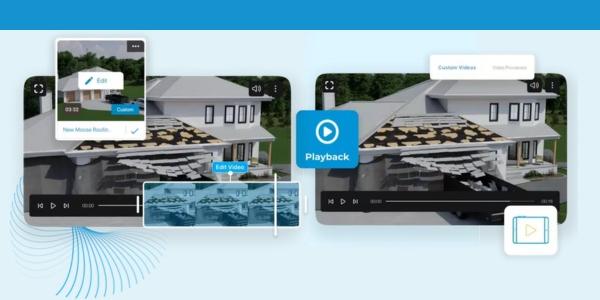The 9 Steps of the Hail-Damage Sales Process

By HOVER.
Learn the ins and outs of restoration jobs with Adam Bensman and HOVER.
Storm season is among us and if you’re an exterior contractor, you know how big of an asset it is to know the ins and outs of restoration so you can confidently service damaged homes after a storm. Adam Bensman, a sales and marketing consultant for roofing companies, shares his best practices for approaching restoration projects in a video created specifically for new salespeople or owners of retail roofing companies who are making a shift from retail sales to storm damage restoration sales.
These jobs are typically a result of an insurance company totaling or paying for a full replacement or partial replacement and repair of a homeowner's property, so if you're brand new or if you're making the shift, it's important for you to understand this process not only to sell effectively but to educate your homeowners.
Here is a walkthrough of the nine steps for selling hail-damaged homes:
Step 1: Signing the contingency agreement
Different from retail sales, a contingency agreement is an agreement that you present to the homeowner that works everybody's interests out so that it is win-win agreement. The agreement basically says three things:
-
It allows you to communicate with the insurance company on behalf of the homeowner. Their policy information is protected by law so with that document there's proof that you have a working relationship.
-
It states that the work is 100% contingent upon roof approval.
-
It says that you, the contractor, have the privilege of doing the work and will get paid.
Do this upfront to earn trust and credibility with the homeowner.
Step 2: Meeting with the insurance adjuster
This is where HOVER comes into play, helping both contractors and adjusters alike. With HOVER, you can take your photos, get your measurement and understand the depth of the soffits which may dictate whether or not there's one or two rows of ice and water shield. When you use HOVER up front and have your roof measurements in a 3D model ready for the adjuster, it allows you to build rapport with the insurance adjuster while he or she is onsite assessing the damage of the home and putting together the scope of loss. HOVER makes meeting and working with the adjuster easy, because it allows you to work hand in hand to support the adjuster, being there to represent another set of eyes while he or she is completing the inspection.
Step 3: Review the scope of loss
The insurance adjuster is going to use an industry software to take the measurements of that roof. Whatever material might be damaged they will measure it, take the quantity of that product and insert it into this software which will produce the scope of loss, an assessment that produces a line item by line item agreement saying what was damaged, how much was damaged and what it costs. When the homeowner receives their scope of loss, you want to sit down with them and review that paperwork. Then one of two things happen: you will either find it all looks good and start work or find something might have been missed. Which brings us to our next step.
Step 4: Supplement
A supplement is documented evidence that maybe there was something missed on the initial adjuster appointment. It's not due to negligence, as humans, people miss things or we find things later. If this happens to be the case, it is the contractor's responsibility to document anything that might have been missed or additional work that arises as a result of the storm damage. That supplement is then submitted to the insurance company so that proper funds are released for you to get that work done.
Step 5: The build order
This is the fun part of the process! This is when you sit down with the homeowner and choose roof colors. Adam highly recommends contractors collect a deposit, either through the initial payment from the insurance company which is called the ACG or actual cash value, which is typically what the roof is worth today, s not require the homeowner to come out of pocket.
Step 6: Installation day
During installation you do all of the work of course. It's important to document everything. Taking photos helps ensure that if you find anything in the process you have that evidence to submit for a supplement. This is also a great time to canvass the neighborhood for additional work. So, talk with the neighbors and see if you might be able to help them out.
Step 7: Clean up and walkthrough
This is where you want to make sure that all the work that you said you were going to do is done. The homeowner will walk around and inspect everything. This is also a fantastic time to ask for referrals.
Step 8: File for depreciation
This is where you provide proof to the insurance company that the job has been done and they will then release any additional funds that might be due to make up for the final replacement cost of the roof. Typically, the contractor will send that evidence to the insurance company on behalf of the homeowner.
Step 9: Getting paid
When the job’s done and you've invoiced the insurance company for file depreciation, the insurance company will typically mail that check to the homeowner. Then it's up to you to collect that final payment get paid. If there are any commissions this is your time to pay out.
Learn more about HOVER in their RoofersCoffeeShop® Directory or visit Hover.to.
Original article source: HOVER
Photo source: HOVER




















-2025-xtv-mls-tour-2.png)

Comments
Leave a Reply
Have an account? Login to leave a comment!
Sign In